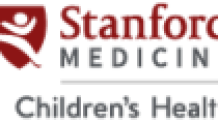

The following content is created in partnership with Stanford Medicine Children's Health. It does not reflect the work or opinions of the NBC Bay Area editorial staff. Click here to learn more about Stanford Medicine Children's Health.
Though kidney donations are an impressive and relatively new advancement within the history of modern medicine, the process of matching donors and patients operated with many of the same pitfalls for several decades: limited organ availability, misaligned timing, and long wait times. The fact remains that an organ donation is only a promising life-saving procedure if patients can access it when they need it. But an innovative new program known as the National Kidney Registry Voucher Program is successfully overcoming many of these organ-donation hurdles and giving patients like eight-year-old Alex Zwakman and his family just the hope they need.
Kidney Donation: A History
Get a weekly recap of the latest San Francisco Bay Area housing news. Sign up for NBC Bay Area’s Housing Deconstructed newsletter.
The first successfully transplanted human organ was a kidney in 1954. The first liver, heart and pancreas transplants followed soon after in the 1960s. However, it wasn’t until 1977 that the Southeast Organ Procurement Foundation implemented the first computer-based organ matching system. Before this innovation, many organs weren’t used simply because medical and transplant teams couldn’t find a compatible recipient in time and were limited by the donor’s location. This system was pivotal in matching patients to donors, but many limitations confounded doctors and patients for decades to follow—many physiological factors must align before finding a match, most donated organs come from deceased donors, and kidneys are only viable for a limited time frame of 24 to 36 hours making timing one of the most difficult hurdles to overcome.
Such is the case for Alex Zwakman and his family. Playful and curious Alex was diagnosed with mitochondrial DNA deletion syndrome at just 3 years old. This group of rare genetic disorders lead to various systemic issues, the main problem area for Alex being his kidneys which currently function at 20 percent capacity. Armed with early detection and the knowledge that Alex will likely need a kidney transplant in the future, you might reasonably believe that the Zwakman’s can plan and guarantee a successful kidney transplant for their son, but this hope only became realistic when they discovered the National Kidney Registry Voucher Program through Stanford Medicine Children’s Health.
A New and Improved Donation System
After receiving the difficult news of Alex’s diagnosis, the Zwakman’s were met with even more disheartening news: neither parent was a match to donate to their son. Even if one had been a viable match, there was no guarantee that they would be healthy or young enough to undergo surgery the moment Alex needed the transplant, another uncertain variable.
Even in the U.S., considered to have one of the best systems for organ donation and recovery in the world that has saved millions of lives, doctors at UCLA recognized room for improvement and found a way to alleviate some of the pitfalls of the existing system in which 20 people die every day waiting for an organ. It started in 2014 when a grandfather in Los Angeles wanted to help his grandson, who would need a kidney transplant in the future. He wondered if he could serve as a living donor for a patient in need before being disqualified by age. In exchange, his grandson would be prioritized when he needed the transplant. So began the innovative program that would allow family members, friends, or even altruistic strangers to donate regardless of timing and incompatibility. Essentially, the voucher donor gives a kidney to a compatible patient on dialysis in exchange for a voucher to be redeemed by the intended patient later when needed. Now living donors can help friends and family members in need while still planning around life events or donating before aging out of the range of eligibility.
Not only did the voucher program give hope to the Zwakmans who were not compatible donors for their son, but it also offered a flexible timeframe that alleviated some of their other worries.
“This really gives parents peace of mind,” explains Thomas Pham, MD, surgeon at Stanford Medicine Children’s Health. “The idea that a parent who is donating can choose the time for their surgery is a big benefit. It allows parents to be at the bedside if or when their child needs surgery later on and fully care for them during their recovery.”
This flexibility was a huge relief for a busy family with two young children like the Zwakmans.
“The last thing we wanted to do was to have my wife and daughter at home with two people who are recovering from surgery,” said Alex’s father, Gregory Zwakman. “This way, I’m fully healed, and I can also participate in caring for Alex after his surgery.”
The Success of the Voucher Program
Because of the flexible nature of the program, it has triggered an uptick in living kidney donations, according to data compiled by the National Kidney Registry. Additionally, the transplant waiting period for those enrolled with the registry dropped by three months thanks to the voucher program, according to a report published by JAMA Surgery, a peer-reviewed journal.
Since 2014, the program has extended to 79 facilities across the country as part of the National Kidney Registry, including Stanford Medicine Children’s Health Pediatric Kidney Transplant Program which sees some of the highest volumes of pediatric organ transplants in the nation. They also successfully treat some of the most complex transplantation cases in children like Alex, enabling them to live a full life. As doctors continue to innovate and improve the organ donation system, these figures and early successes are offering hope to transplant patients everywhere.
During April, Stanford Medicine Children’s Health celebrates National Donate Life Month in recognition of the selfless organ donors who make these lifesaving procedures possible. Click here to learn more about their world-renowned Pediatric Transplant Center.

